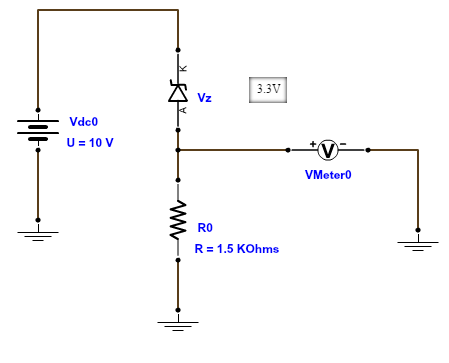angy
Full Member level 3
I was troubleshooting a circuit and i came to this part of circuit .it contains zener diode(3.3V) and a pull down resistor.When i apply supply voltage(10V) i should get 6.7 V.But during troubleshooting i found full 10V across output .later i found resistor was not properly grounded .Now my doubt is when one end of resistor is not grounded how do we get 10V across output.

